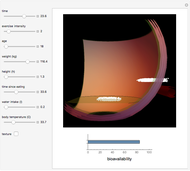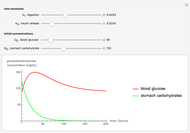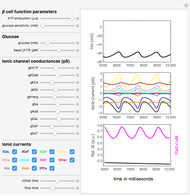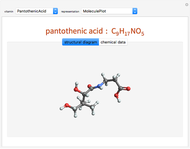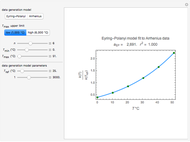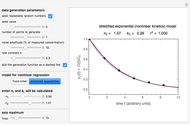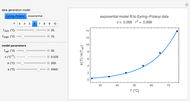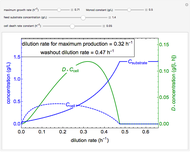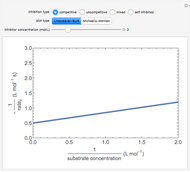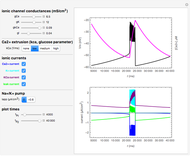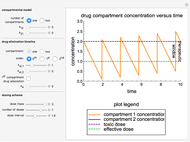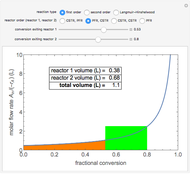Pharmacokinetic Modeling

Requires a Wolfram Notebook System
Interact on desktop, mobile and cloud with the free Wolfram Player or other Wolfram Language products.
One- and two-compartment pharmacokinetic models calculate the concentration of a drug in the body as a function of time for a given dosing scheme. There are two options for administering the drug: injection into compartment 1 (e.g., inject into the blood stream with a needle) or absorption into compartment 1 from compartment 2 (e.g., drug in stomach absorbed into blood stream). Select the mass of the dose, number of doses and intervals between doses with sliders. The objective is to select a dosing scheme so that as much of the drug as possible has a concentration between the effective dose and the toxic dose (the therapeutic window). The drug can be eliminated from compartment 1 (set rate constant  with a slider) or transferred to compartment 2 (slider
with a slider) or transferred to compartment 2 (slider  ). Similarly, in compartment 2 the drug can be eliminated (slider
). Similarly, in compartment 2 the drug can be eliminated (slider  ) or transferred back to compartment 1 (slider
) or transferred back to compartment 1 (slider  ). Change the reaction order of the drug elimination kinetics with buttons. The areas under the curves correspond to the total exposure to the drug.
). Change the reaction order of the drug elimination kinetics with buttons. The areas under the curves correspond to the total exposure to the drug.
Contributed by: Nicholas R. Larson (June 2014)
With additional contributions by: Rachael L. Baumann, John L. Falconer and Nick Bongiardina
(University of Colorado Boulder, Department of Chemical and Biological Engineering)
Open content licensed under CC BY-NC-SA
Snapshots
Details
The drug is well-mixed in either compartment. The drug is either administered as a rapid dose (i.e., bolus injection) or it absorbs into compartment 1. The constants  and
and  represent the rate transfer coefficients from compartment 1 to compartment 2 and vice versa, assuming a first-order transfer between them. Each compartment has its own elimination rate
represent the rate transfer coefficients from compartment 1 to compartment 2 and vice versa, assuming a first-order transfer between them. Each compartment has its own elimination rate  and
and  . The absorption coefficient
. The absorption coefficient  determines the rate at which the drug absorbs into compartment 1, and it assumes first-order absorption in the amount of the dose. The concentrations and time are intentionally left unit-less, but the system is dimensionally consistent. The drug elimination reaction order is
determines the rate at which the drug absorbs into compartment 1, and it assumes first-order absorption in the amount of the dose. The concentrations and time are intentionally left unit-less, but the system is dimensionally consistent. The drug elimination reaction order is  .
.
When the dose absorbs into compartment 1, then the amount changes with time:
 .
.
If there is no absorption and the dose is directly injected, then the dose amount is distributed within compartment 1 at the injection time. The first dose is at time zero, and the same mass is then injected for each subsequent dose.
Compartment 1:
 ,
,
where  is the drug concentration in compartment 1,
is the drug concentration in compartment 1,  is the drug concentration in compartment 2 and
is the drug concentration in compartment 2 and  is the volume of compartments 1 and 2.
is the volume of compartments 1 and 2.
Initial condition for compartment 1:
 when absorption occurs
when absorption occurs
 when absorption does not occur.
when absorption does not occur.
Compartment 2:
 ,
,
with initial condition  .
.
Permanent Citation






